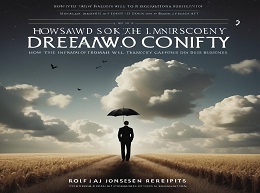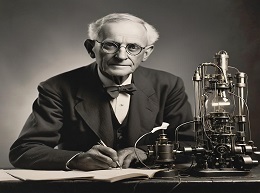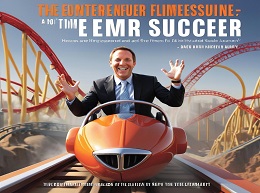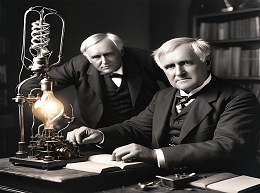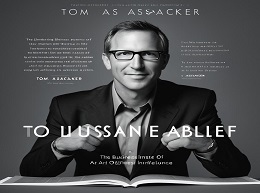The Myth of the Robber Barons: A New Look at the Rise of Big Business in America
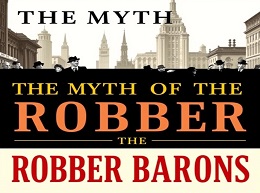
The Myth of the Robber Barons: Rethinking American Big Business
In "The Myth of the Robber Barons: A New Look at the Rise of Big Business in America," historian Burton W. Folsom, Jr. challenges the traditional narrative of the so-called "robber barons" who dominated the American economy in the late 19th and early 20th centuries. Folsom argues that these industrialists were not merely greedy monopolists but rather innovative entrepreneurs who played a crucial role in driving economic growth and improving the standard of living for many Americans. This review explores the key themes and arguments presented in the book, supported by historical examples that illustrate Folsom's perspective.
The Conventional Narrative
The term "robber barons" traditionally evokes images of ruthless tycoons who exploited workers, manipulated markets, and amassed vast fortunes at the expense of the public. Figures like John D. Rockefeller, Andrew Carnegie, and Cornelius Vanderbilt are often portrayed as the villains of American economic history. This narrative suggests that their wealth was acquired through unethical practices and that government intervention was necessary to curb their excesses.
Example: John D. Rockefeller and Standard Oil
John D. Rockefeller, the founder of Standard Oil, is frequently depicted as the epitome of a robber baron. Critics argue that he achieved his monopoly through predatory pricing, secret deals, and aggressive tactics to eliminate competitors. The resulting concentration of power in the hands of Standard Oil supposedly stifled competition and harmed consumers.
Folsom's Revisionist Perspective
Burton Folsom offers a different interpretation. He distinguishes between "political entrepreneurs" who relied on government subsidies and protection, and "market entrepreneurs" who thrived through innovation and efficiency. According to Folsom, many of the so-called robber barons were actually market entrepreneurs who created value and drove economic progress.
Insight: The Role of Market Entrepreneurs
Market entrepreneurs like Rockefeller and Carnegie are credited with introducing innovations that lowered costs and expanded access to goods and services. For instance, Rockefeller's development of the oil refinery process drastically reduced the price of kerosene, making lighting affordable for millions of Americans. Similarly, Carnegie's adoption of the Bessemer process revolutionized steel production, enabling the construction of skyscrapers and railroads.
Cornelius Vanderbilt: The Commodore
Folsom begins with Cornelius Vanderbilt, a figure often associated with cutthroat competition in the steamboat and railroad industries. Vanderbilt's critics accused him of unethical practices, but Folsom presents a different view, emphasizing his contributions to transportation and commerce.
Example: The Steamboat Wars
In the 1810s and 1820s, Vanderbilt competed fiercely in the steamboat industry, driving down fares and improving service. His low-cost steamboat services broke the monopoly of the state-protected Fulton-Livingston steamboat company, ultimately benefiting consumers and promoting economic growth.
Andrew Carnegie: The Steel King
Andrew Carnegie's legacy is similarly complex. Known for his vast steel empire and philanthropy, Carnegie's business practices have been scrutinized for their impact on labor and competition. Folsom argues that Carnegie's success was rooted in his ability to innovate and improve efficiency.
Example: The Homestead Strike
The Homestead Strike of 1892 is often cited as an example of Carnegie's harsh labor practices. However, Folsom contextualizes this event within Carnegie's broader contributions to the steel industry, including his willingness to invest in new technologies and his focus on cost reduction, which ultimately made steel more affordable and accessible.
John D. Rockefeller: The Oil Magnate
John D. Rockefeller's Standard Oil is frequently cited as the quintessential monopoly. Critics argue that his business practices stifled competition, but Folsom presents a nuanced view, highlighting Rockefeller's role in creating an efficient and integrated oil industry.
Insight: The Efficiency of Standard Oil
Rockefeller's innovations in refining, transportation, and marketing of oil products led to significant cost reductions and higher quality standards. His emphasis on efficiency and economies of scale benefited consumers by providing affordable kerosene and other petroleum products.
Government Subsidies and Corruption
Folsom contrasts market entrepreneurs with political entrepreneurs who relied on government support to build their empires. These political entrepreneurs often engaged in corrupt practices to secure subsidies and favorable regulations, resulting in inefficiency and waste.
Example: The Transcontinental Railroad
The construction of the transcontinental railroad involved significant government subsidies and land grants. Folsom argues that this led to corruption and mismanagement, exemplified by the Crédit Mobilier scandal, in which Union Pacific Railroad executives embezzled funds intended for the railroad's construction.
Innovation and Economic Growth
Market entrepreneurs, on the other hand, drove innovation and economic growth through competition and efficiency. Folsom emphasizes that these entrepreneurs were essential to America's industrialization and economic development.
Example: The Telegraph and Communication
The development of the telegraph by Samuel Morse and the subsequent expansion of telegraph networks by entrepreneurs like Western Union revolutionized communication. This innovation facilitated business operations, enhanced coordination across distances, and contributed to economic integration.
Improved Standards of Living
Folsom argues that the innovations and efficiencies introduced by market entrepreneurs led to improved standards of living for many Americans. By lowering the cost of goods and services, these entrepreneurs made essential products more accessible to the general public.
Example: The Sewing Machine
The invention and commercialization of the sewing machine by entrepreneurs like Isaac Singer transformed the textile industry. The sewing machine made clothing production more efficient and affordable, enabling more people to purchase ready-made garments and improving overall living standards.
Philanthropy and Social Contributions
Many market entrepreneurs also engaged in philanthropy, using their wealth to support education, healthcare, and other social causes. Folsom highlights the positive contributions of these entrepreneurs to society.
Example: Andrew Carnegie's Philanthropy
Andrew Carnegie's extensive philanthropy, including the establishment of libraries, universities, and research institutions, had a lasting impact on education and culture. His belief in the "Gospel of Wealth" underscored his commitment to using his fortune for the public good.
Reassessing the Robber Barons
"The Myth of the Robber Barons" challenges the conventional portrayal of America's industrial giants as mere exploiters. Through a series of detailed case studies and a clear distinction between political and market entrepreneurs, Burton Folsom provides a more balanced view of these historical figures. He argues that many of these so-called robber barons were, in fact, innovative leaders who played a crucial role in driving economic progress and improving the standard of living.



